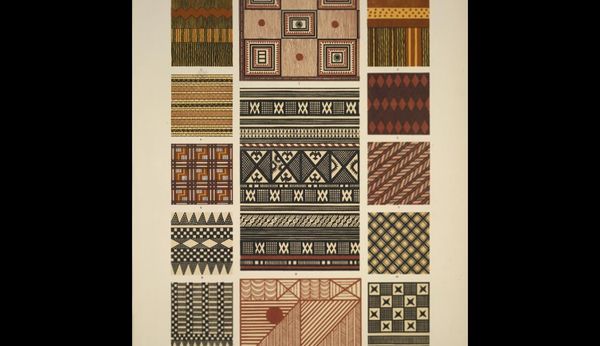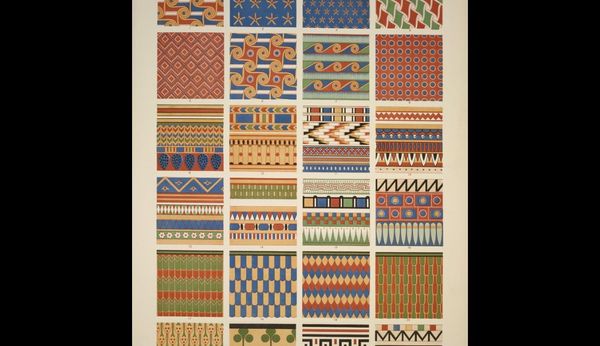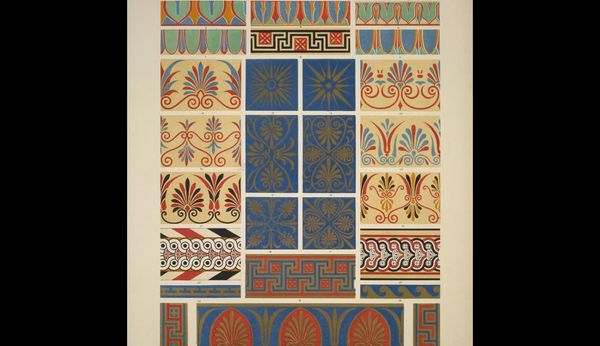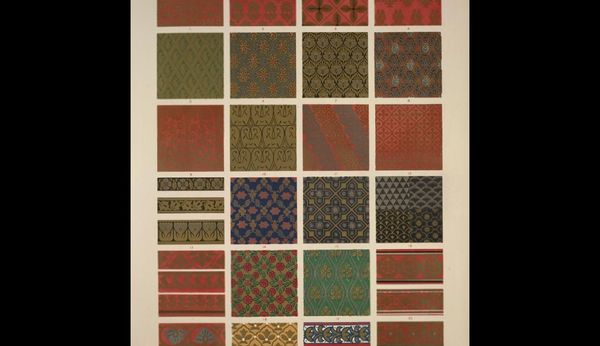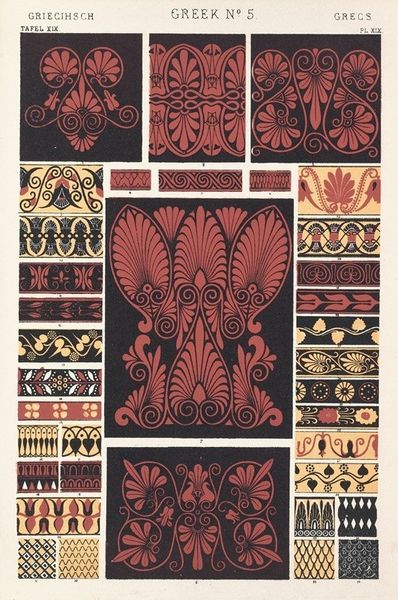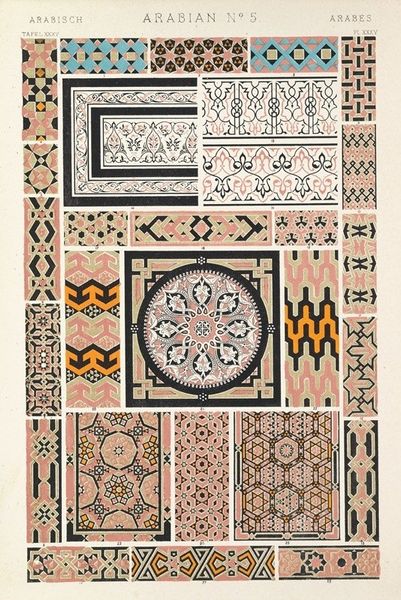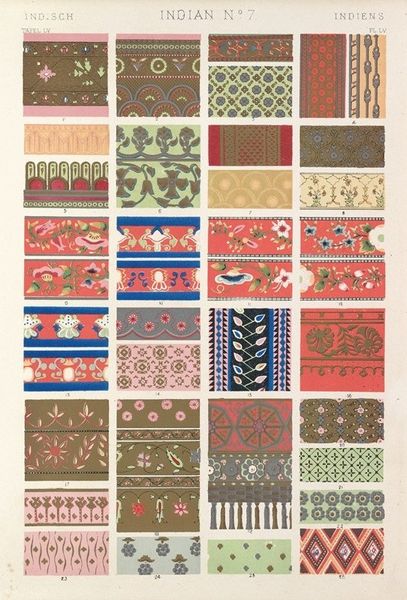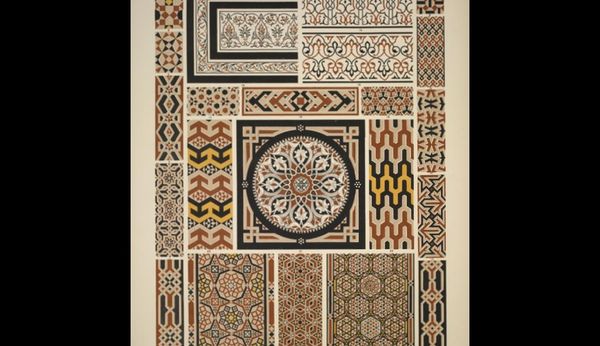
drawing, print, textile
#
deckled
#
drawing
#
type repetition
#
neoclassicism
# print
#
man-made pattern
#
pattern
#
textile
#
text
#
brick
#
organic pattern
#
column grid
#
repetition of pattern
#
vertical pattern
#
line
#
pattern repetition
#
decorative-art
#
layered pattern
Copyright: Public domain
Curator: This lithographic print presents a collection of borders, titled "Pompeian no. 1. Collection of borders from different edifices in Pompei," credited to Owen Jones. Editor: My immediate thought is that this arrangement of patterns really emphasizes the ordered mindset and aesthetic values of a bygone era. I feel as though this image creates order, rather than showcases chaos. Curator: Precisely. These meticulously documented borders, sourced directly from Pompeii, offer us invaluable insight into the visual language that shaped Roman domestic life and, subsequently, the Neoclassical revival. We see the emotional draw the find of Pompei had for society during that time. Editor: It is hard to think about Rome without the legacy that’s continued culturally. But focusing on what Jones has given us, I wonder about the social context. The act of cataloging and reproducing these designs – what function did it serve for 19th-century audiences? It must have been a study piece, right? Curator: Most definitely! These designs, with their inherent geometry and repetition, represent an idealized aesthetic. But consider their deeper symbolic role, even back in Pompei – as border markers. These images were acting as frames for experience. Editor: Frames that not only contain but also direct the gaze. It is curious how such carefully replicated patterns reflect 19th century obsessions with order, as well as imperial claims of grandeur, through referencing a very ancient aesthetic vocabulary. Curator: It underscores that design is never politically neutral. Every choice has its place within history. And I'm constantly fascinated by how forms and images resonate across the centuries. The echo of Roman artistry transformed again. Editor: Ultimately, viewing artwork in light of social narratives really encourages questioning design trends—who gets to dictate “good taste” and why, through these reproductions and appropriations.
Comments
No comments
Be the first to comment and join the conversation on the ultimate creative platform.
